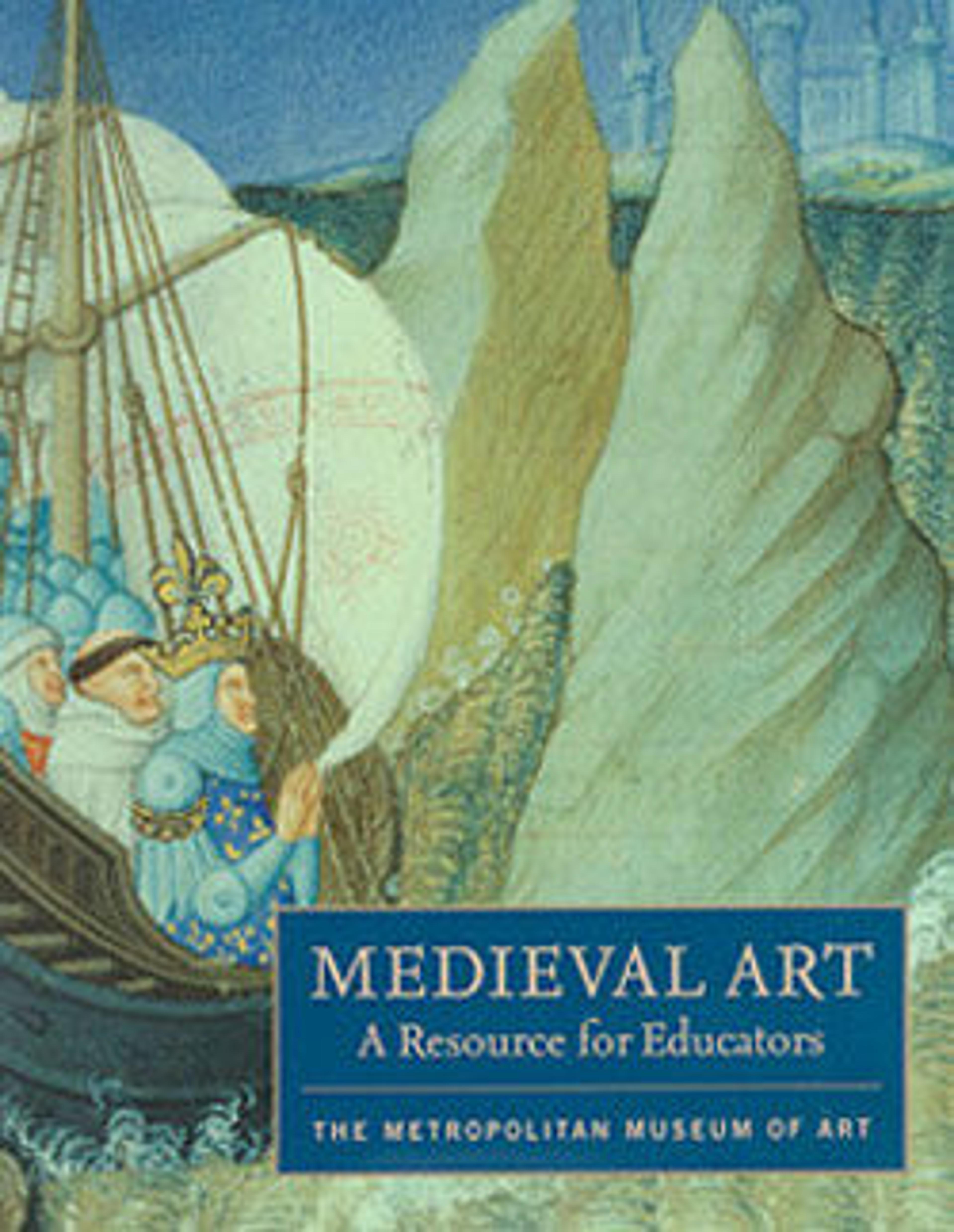The Battle with the Sagittary and the Conference at Achilles' Tent (from Scenes from the Story of the Trojan War)
This fragment is one of three in the Museum's collection that comes from two or more tapestries depicting scenes from the Trojan War. In the lower left portion of the tapestry, mounted Greek warriors are driven back to their tents by the terrifying figure of the Sagittary, a centaur (part man and part horse) whose powerful figure dominates the center of the scene and who fights on the side of the Trojans. Medieval accounts of the war introduced the idea of a truce after the fifth battle, during which Hector visited Achilles in his camp. It is this truce scene that occupies the lower right portion of the tapestry. A large banderole at the top containing quatrains in French and a small banderole at the bottom left with distichs in Latin describe the events depicted. In addition, the names of the participants in the battle, such as Achilles, are inscribed on the clothing and armor of some of the figures.
In 1488 the English king, Henry VII, bought a set of eleven Trojan War tapestries from Jean Grenier, one of Pasquier Grenier's sons. It is likely that the Museum's hangings were also produced by the Grenier family.
In 1488 the English king, Henry VII, bought a set of eleven Trojan War tapestries from Jean Grenier, one of Pasquier Grenier's sons. It is likely that the Museum's hangings were also produced by the Grenier family.
Artwork Details
- Title: The Battle with the Sagittary and the Conference at Achilles' Tent (from Scenes from the Story of the Trojan War)
- Artist: Probably produced through Jean or Pasquier Grenier of Tournai
- Date: ca. 1470–90
- Geography: Made in Tournai, South Netherlands
- Culture: South Netherlandish
- Medium: Wool warp, wool wefts with a few silk wefts
- Dimensions: Overall: 172 × 156 in. (436.9 × 396.2 cm)
- Classification: Textiles-Tapestries
- Credit Line: Fletcher Fund, 1952
- Object Number: 52.69
- Curatorial Department: Medieval Art and The Cloisters
Audio
864. The Battle with the Sagittary and the Conference at Achilles' Tent (from Scenes from the Story of the Trojan War)
0:00
0:00
We're sorry, the transcript for this audio track is not available at this time. Please email info@metmuseum.org to request a transcript for this track.
More Artwork
Research Resources
The Met provides unparalleled resources for research and welcomes an international community of students and scholars. The Met's Open Access API is where creators and researchers can connect to the The Met collection. Open Access data and public domain images are available for unrestricted commercial and noncommercial use without permission or fee.
To request images under copyright and other restrictions, please use this Image Request form.
Feedback
We continue to research and examine historical and cultural context for objects in The Met collection. If you have comments or questions about this object record, please contact us using the form below. The Museum looks forward to receiving your comments.
